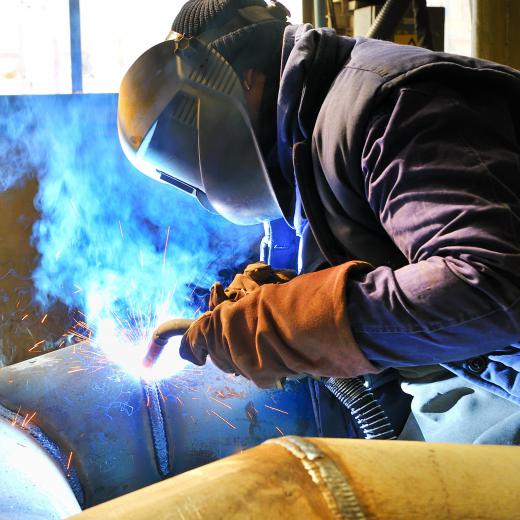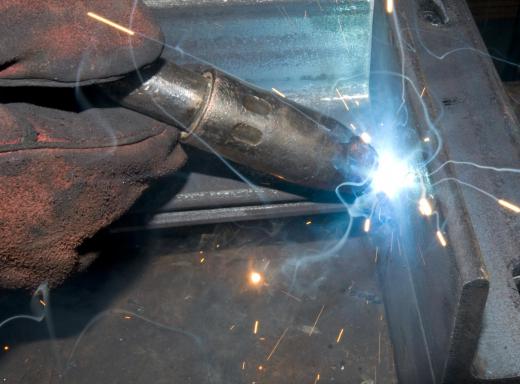A welded joint occurs when two pieces of material, traditionally metal, are fused together using a welder. Welding joints come in two major types and can be used for a variety of purposes. This popular type of metal connection has many advantages over traditional joints, ranging from its speed to its strength, visual appeal and more. No matter what equipment is used, a welded joint is a crucial part of modern construction.
The key to a welded joint is the coalescence when two metals are joined, often by a third piece of metal, via the welder. The two major types of welding, liquid state fusion and solid state, and both heat materials to molten levels in order to combine material together. The result is a fusion of the two metals when everything cools. A welder wears heavy gloves and a thick mask for protection from the sparks and heat associated with this process, which often requires years of practice to do the job properly.

Liquid state fusion welding is when a third element, usually a thin metal, is melted to fuse the welds together. Liquid state fusion includes many types of welding, such as arc welding and tungsten inert gas (TIG) welding. This offers many advantages over traditional joints, but the most important is the creation of an efficient joint that accurately connects only the intended materials. Another piece of metal is heated and added to the composition, so repairing liquid joints is easy because the process is simply repeated. A liquid welded joint also is preferred for use in heat-treated or cold-treated metals because the weld will not destroy the special treatment.

A solid state welded joint happens when the two pieces of metal are heated without a third element, so the metals fuse together molecularly. The advantage of this type of welding over traditional joints comes from appearance, materials and weight. The welded joint requires no additional metal, so it weighs basically the same as when the operation started and helps many industries in which tiny fluctuations in weight make a big difference. This also is a low-cost method of welding because it requires no additional materials to fuse two separate pieces together. This weld also has a smooth appearance and does not display the bolts and screws of traditional joints or the large, scar-like markings of liquid state fusion welding.
